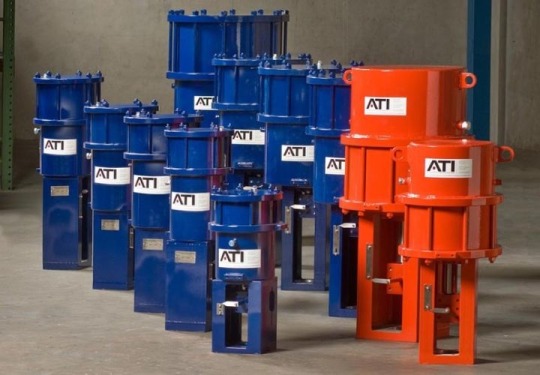Text
Dive into Pneumatic Linear Actuator Tech

In the realm of automation and industrial machinery, the quest for efficiency, reliability, and precision is unceasing. One of the crucial components enabling this pursuit is the pneumatic linear actuator. These robust devices have become indispensable in a wide array of applications, from manufacturing and robotics to automotive and aerospace industries. Let's delve into the workings, applications, and advancements of pneumatic linear actuators, and explore how they're shaping the future of engineering and automation.
Understanding Pneumatic Linear Actuators
At its core, a pneumatic linear actuator is a mechanical device that converts compressed air energy into linear motion. The principle behind its operation is relatively simple yet effective. Compressed air is directed into the actuator's chamber, exerting force on a piston or diaphragm, which then moves along a linear path. This linear motion can be used to perform various tasks, such as opening or closing valves, lifting loads, positioning components, or actuating robotic arms.
Versatility in Applications
One of the key strengths of pneumatic linear actuators lies in their versatility. They find applications across a broad spectrum of industries
Manufacturing: In automated assembly lines, pneumatic linear actuators play a vital role in precise positioning and manipulating components. They ensure smooth and efficient operation, contributing to increased productivity and throughput.
Robotics: Pneumatic actuators are commonly used in robotic systems for tasks that require rapid and precise movement. Whether it's pick-and-place operations, material handling, or assembly tasks, these actuators provide the necessary force and speed.
Automotive: From automated welding and painting processes to assembly line operations, pneumatic actuators are integral to automotive manufacturing. Their reliability and robustness make them ideal for handling various tasks in the production of vehicles and their components.
Aerospace: In aerospace applications, where lightweight yet durable components are paramount, pneumatic actuators offer an excellent solution. They are utilized in aircraft systems for functions such as controlling flaps, landing gear, and cargo doors.
Medical: Pneumatic actuators play a crucial role in medical devices and equipment, such as surgical robots, patient handling systems, and diagnostic instruments. Their precise control and sterile operation make them indispensable in healthcare settings.
Advancements Driving Innovation
In recent years, advancements in materials, design, and control technologies have led to significant improvements in pneumatic linear actuators
Materials: The use of lightweight and high-strength materials, such as aluminum alloys and composite polymers, has resulted in actuators that offer better performance while minimizing weight and energy consumption.
Miniaturization: Miniature pneumatic actuators are becoming increasingly common, enabling their integration into compact and space-constrained applications, including medical devices, consumer electronics, and micro-robotics.
Smart Actuators: Integration of sensors, feedback systems, and advanced control algorithms has transformed pneumatic actuators into smart devices capable of precise motion control, adaptive performance, and self-monitoring capabilities.
Energy Efficiency: Efforts to improve energy efficiency have led to the development of pneumatic actuators with reduced air consumption and optimized performance characteristics, resulting in lower operating costs and environmental impact.
Future Prospects
As industries continue to embrace automation and robotics, the demand for pneumatic linear actuators is expected to grow. Advancements in materials science, sensor technology, and artificial intelligence will further enhance the capabilities and performance of these actuators, opening up new possibilities in areas such as collaborative robotics, wearable exoskeletons, and autonomous vehicles.
In conclusion, pneumatic linear actuators represent a cornerstone of modern engineering and automation. Their ability to convert compressed air into precise linear motion makes them indispensable across a wide range of industries and applications. With ongoing innovations driving their evolution, pneumatic actuators are poised to play an even more significant role in shaping the future of technology and industry.
1 note
·
View note